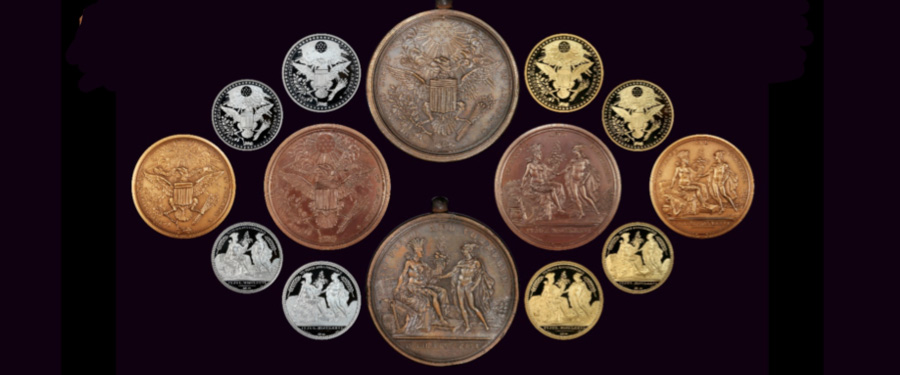
The Diplomatic Medal of the United States was the brainchild of Thomas Jefferson, who served as a minister to France from 1784 to 1790, and then assumed his position as Secretary of State. As custom had it, when a foreign diplomat had served in another country, that country would provide a gift upon the diplomat’s retirement. John Adams received such a gift when he left his service in the Netherlands, and Jefferson received a gift from King Louis XVI when he left France.
The Dutch custom was to present the retiring diplomat with a medal accompanied by a gold chain, with the chain being sized in relation to the length of service the diplomat had provided to his host country. Jefferson favored that custom and requested permission from President George Washington, who approved Jefferson’s request resoundingly. Washington viewed this as an important recognition of the services of those European diplomats serving the United States, noting in his diary:
“Fixed with the Secretary of State on the present which (according to the custom of other nations) should be made to Diplomatic characters when they return from that employment in this Country and this was a gold Medal, suspended to a gold Chain – in ordinary to be of the value of about 120 or 130 Guineas. Upon enquiry, into the practice of other Countries, it was found, that France generally gave a gold Snuff-box set with diamonds; & of differ. Costs to the amount, generally, to a Minister Plenipotentiary of 500 Louisdores – The England usually gave to the same grade 300 guineas in Specie – And Holld, A Medal & Chain of the value of, in common, 150 or 180 Guinesas the value of which to be encreas’d by an additional weight in the chain when they wished to mark a distinguished character. The Reason why a medal & Chain was fixed upon for the American present, is, that the die being once made the Medals could at any time be struck at very little cost, & the Chain made by our own artizans, which (while the first should be retained as a memento) might be converted into Cash.”
Just four original gold Diplomatic Medals were struck, but none appears to have survived. Just four original bronze Diplomatic medals are known to have survived. Due to the importance of the medals, there was a desire to feature the medals at the National Centennial Celebration in Philadelphia in 1876, but none was found at the U.S. Mint, and the dies themselves could not be located. Then Mint Director Henry Linderman tasked William Barber to prepare copy dies for the Medal, based on lead proofs of the original dies lent by Professor Jules Marcou of Cambridge, Massachusetts. Just a small number of Diplomatic Medals were struck for the Centennial from Barber’s dies, now scarce and prized mementos that hearken back to the days of Washington and Jefferson.
Several specimens in the pages following derive from the Cardinal Collection Educational Foundation’s collection of Diplomatic Medals, which included the finest known original bronze Diplomatic Medal struck in 1792, the sole specimen bearing its original hanger.





